Wind speed 5.4 mph
Air Temperature -23.2 C -9.8 F -22.6 F
Latitude 73-11.439N
Longitude 146-41.908W
Today, as part of the education that is continuing during the ice camp, a group of graduate students and post docs (11) set off with Jackie Richter-Menge, one of the principal investigators (lead scientists), on a tour of the ice ridges and leads around the camp. They stopped at a number of spots and discussed (lectured) about the unique characteristics and features that could be observed at that spot.
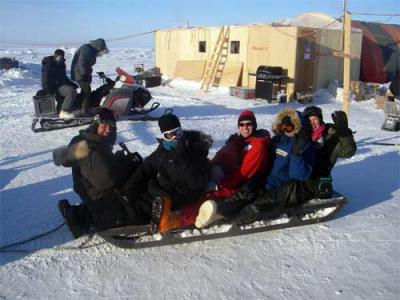
While the tour was going on the dive team suited up. The dive team was transported to the dive hole by snowmobile.
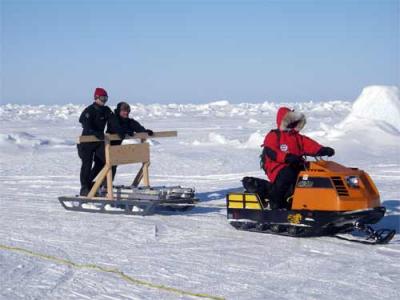
Keith Van Thiel, the lead diver (blue line), was going to investigate the underside of a pressure ridge. Doug Allan, the Discovery Channel cameraman (yellow line), was Keith's dive partner.

The cold water mask and dive equipment reminded me what an alien environment arctic waters are for humans. The divers have a team at the surface looking out for them. Pat was on communications; each diver had their own headsets and could speak with Pat. In addition each diver had his or her own line tender. The surface team methodically went through a checklist preparing each diver. At one point a leaking valve in a regulator had to be fixed. It was similar to watching preparations for a space walk.
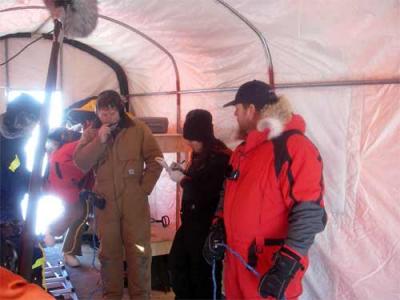
Keith took conductivity, temperature and depth probe to make measurements as he swam up to the keel (bottom) of the pressure ridge. Doug filmed as Keith explored and gathered data.
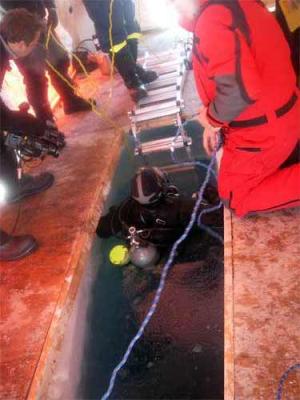
Once he reached the bottom of the pressure ridge Keith took a right and swam along the ridge, until he reached the end of the tether line. Alice Orlich, a student at the University of Alaska Fairbanks, also documented the dive and line lengths in a data notebook.
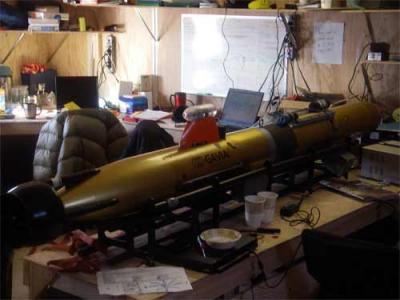
After lunch it was time for me to man the radio in the communications hut for the afternoon. It was also time for the robot submarine team to take GAVIA, which looks like a golden torpedo, for a swim under the ice in the dive hole. GAVIA is underdevelopment and has a special sonar arrangement and software, which allows it to move along the bottom measuring thickness and special features. Theoretically, moving upside down under the ice, GAVIA should do the same thing. But with any piece of specialized instrumentation when you try to adapt the instrument to a new application, problems arise. There have been a number of electronic problems that have come up. When GAVIA has functioned well there have been some issues with the data software and how it interprets the data. After all, GAVIA is swimming upside down. The GAVIA team makes progress by hard work, patience, persistence and problem solving. Each problem solved is a step closer to the solution.

Comments